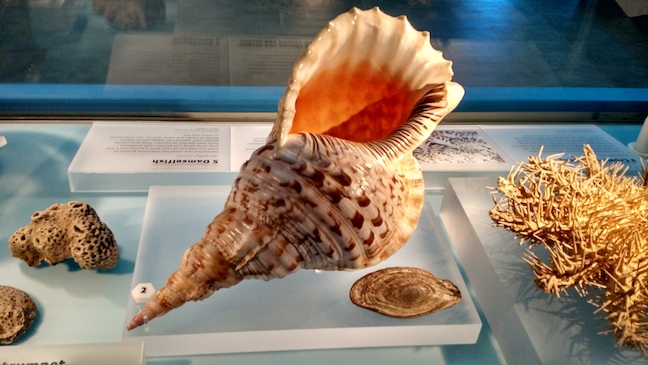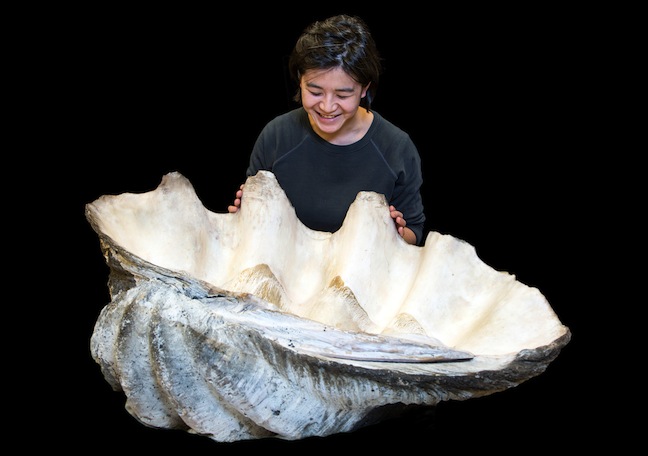This article is more than 1 year old
Coral Reefs: Secret Cities of the Sea exhibition – life beneath the waves
Take a dive at the Natural History Museum
Eco-systems
Reefs, of course, don't exist just on their own. They're part of an ecosystem, and the creatures that live amongst them are equally important – a point that is explained a various places in the exhibit. That's backed up by some specimens, including octopi, grouper, starfishes, urchins, and various other fish. Some of these – like the large ray and a grouper that's around three metres long – are certainly impressive. Others however, are a little less so.
In their glass preserving jars, some of these look as if they probably were samples Darwin picked up on his travels, with little but a pallid yellow colour left to them, and I think that's disappointing.

Though some are undoubtedly beautiful, many of the displays are a little lacking in colour
The impact of changes to the marine ecosystem, for example through overfishing, is explained and perhaps that's what this exhibition is about, more than anything else. If we allow people to drive massive shipping channels through reefs, overexploit the fishing, or fail to stop changes in the temperature and chemistry of the seas, the reefs and all that lives on them will continue to change, with potentially disastrous effects.
And yet, though that's hinted at, again there's not quite enough information for the hungry mind. For instance, an exhibition like this could surely be a call-to-arms regarding current topics like dredging in the Great Barrier Reef.
Life beneath the ocean
There are, thankfully, some exhibits that do make you stop and wonder. A giant clam gave me flashbacks to the Genesis of the Daleks, while the shells of various sea creatures were beautiful – and their roles in the ecosystem of the reefs interesting to learn. The jaws of some creatures that nibble away at the algae on reefs may well give some visitors the willies. And there's astonishing beauty in some places.
One of those is a short video that shows the fertilisation process and, in timelapse, how the polyps clone and grow into a new reef when they've landed.

Don't go putting your foot in this giant clam, now
The other wonder – a highlight that's saved until almost last, at the back of the room next to a video display, is the aquarium. It's packed with living coral, and amazing tropical fish, and shows what you really expect a reef to be – adding real context to the dry exhibits in the other cases. It may not be thousands of miles away beside a tropical island, but in its way, this is much more immediate and striking than even the virtual dives, and you can't help thinking that more of this might engage people – especially youngsters – as they walk around, rather than the ageing samples in glass jars.
Exit, of course, through the gift shop. There you will find plenty more to read or look at – but while this is an interesting exhibition, especially the virtual dive, and the aquarium is beautiful, it's not quite as much of a feast for the mind – or eyes – as I'd hoped.
When: 27 March to 13 September 2015
Opening hours: 10:00-17:50
Entrance: Adult £10, child and concession £4.50, family £24 including optional donation (£9, £4, £21 without). Free for Members, Patrons and children under four.
Time: Allow 45-60 minutes
Contact: 020 7942 5000
®
